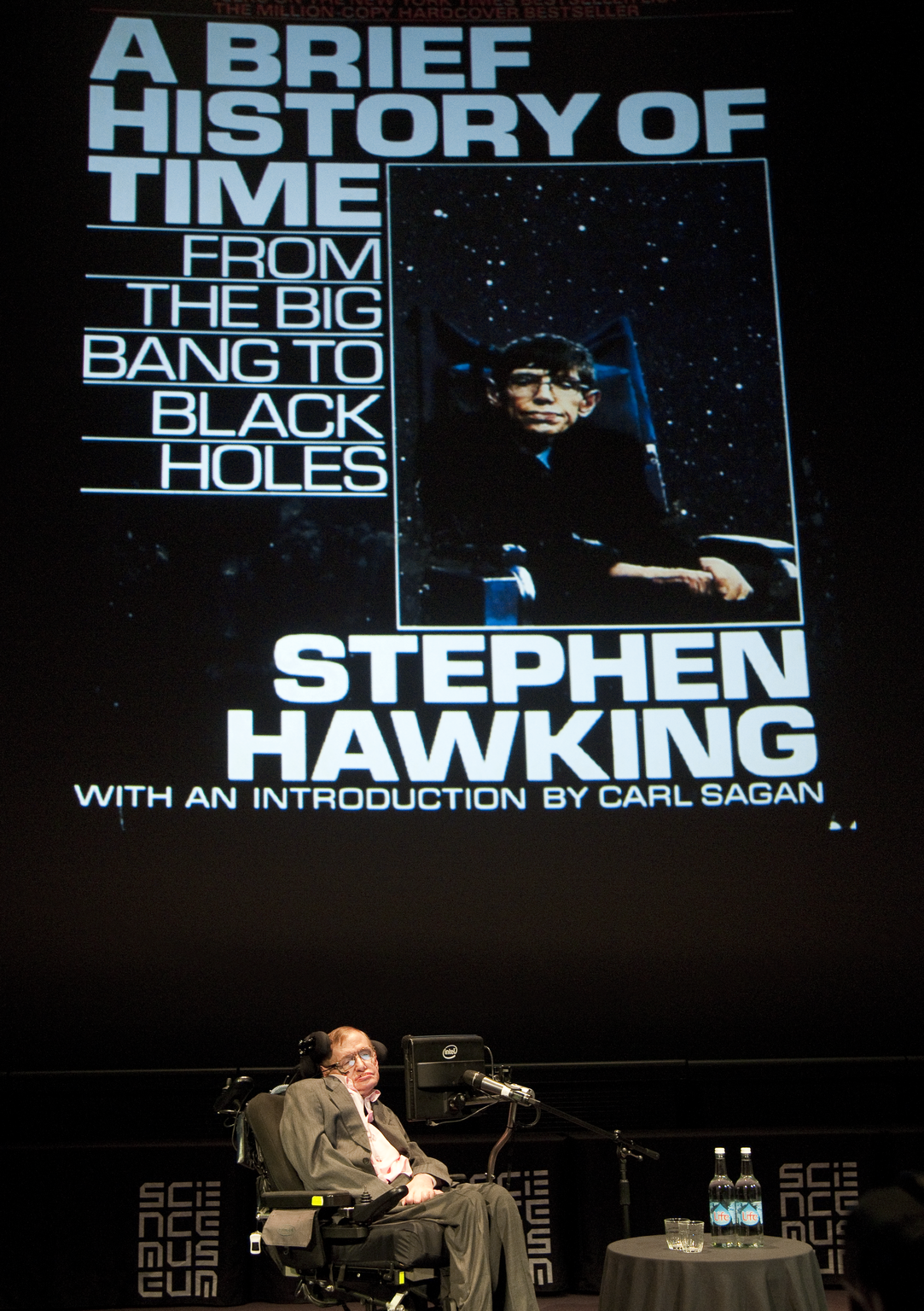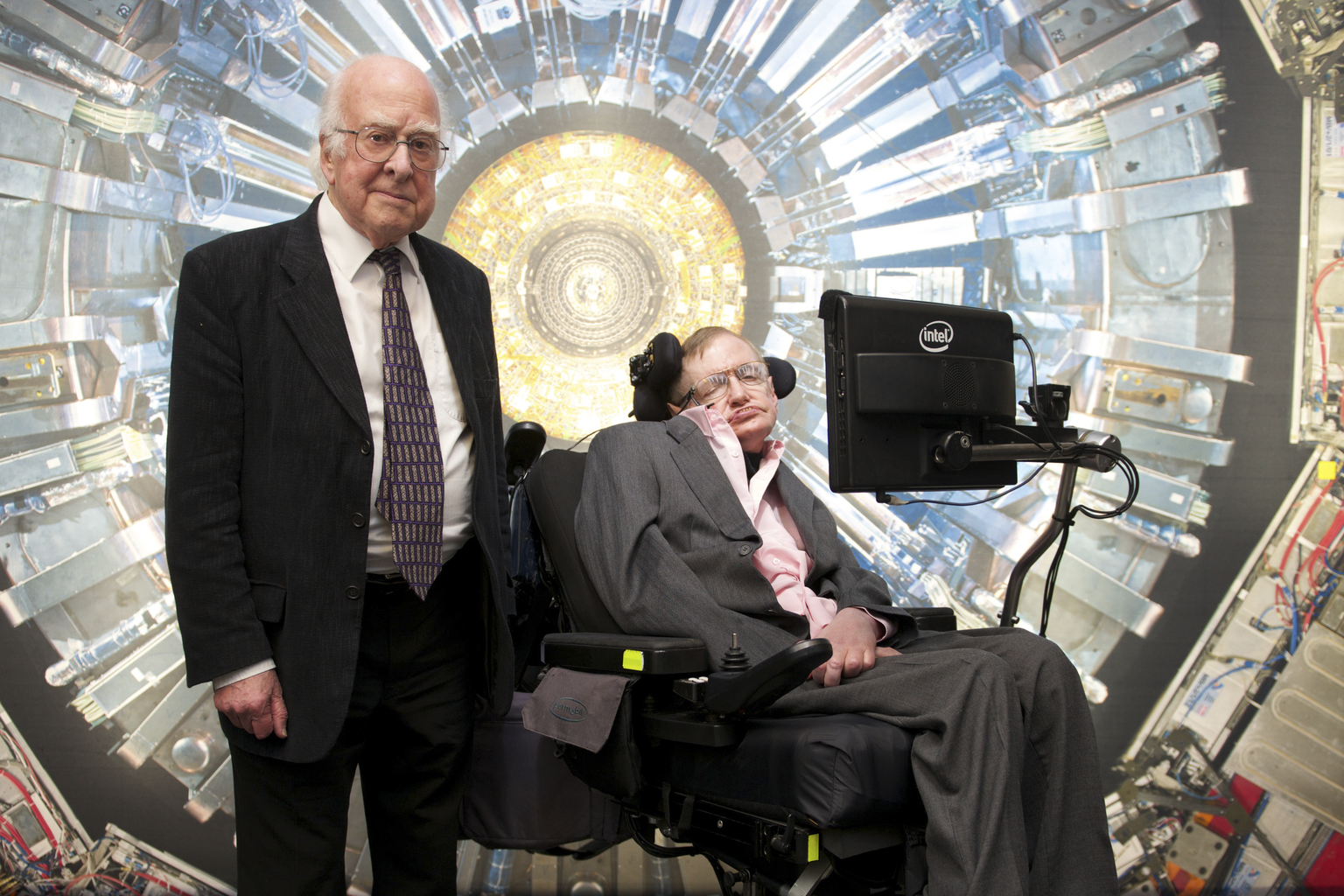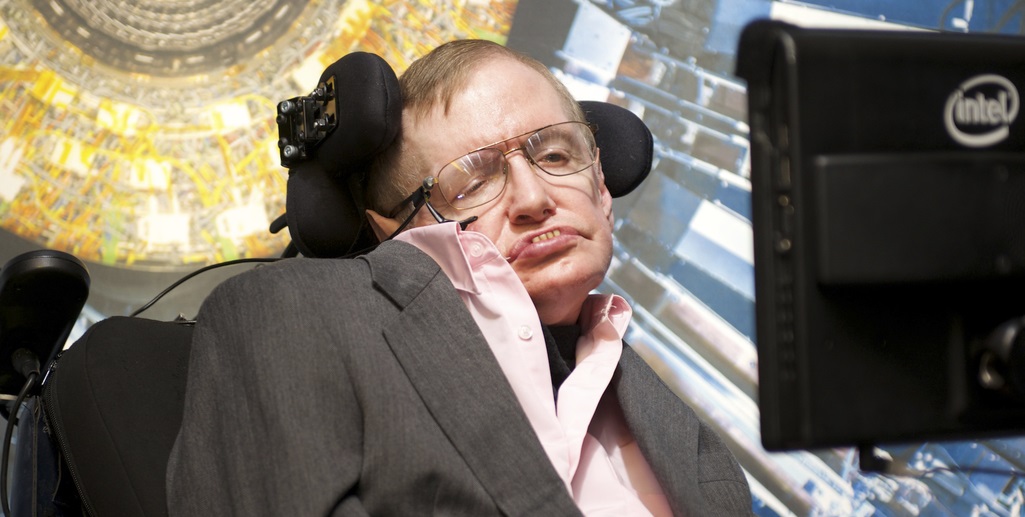While his body was immobile, Hawking used his mind to journey through the cosmos, glimpsing the origins of space and time and enthralling tens of millions of people.
On the morning of 14 March 2018, his children released a statement confirming his death at his home in Cambridge.
Lucy, Robert and Tim, said: “We are deeply saddened that our beloved father passed away today. He was a great scientist and an extraordinary man whose work and legacy will live on for many years. His courage and persistence with his brilliance and humour inspired people across the world.
“He once said: ‘It would not be much of a universe if it wasn’t home to the people you love.’ We will miss him for ever.”
Director of the Science Museum Group, Ian Blatchford said: ‘Stephen was once kind enough to describe the Science Museum, where he was a Fellow, as one of his favourite places and the feeling was absolutely mutual. He was generous to a fault in supporting our work and in allowing us to join him in seeking to inspire the next generation to look up at the stars.’
Prof Hawking was a great friend of the Science Museum. While giving a US schoolteacher a personal tour of the museum in 2015, he said how he had been visiting since his childhood. ”When we were young, my mother used to leave me at the Science Museum, my sister, Mary, at the Natural History Museum, and my younger sister, Philippa, at the Victoria and Albert Museum. At the end of the day, my mother collected us all.”

Dame Mary Archer, Chair of the Science Museum Group Board of Trustees, said: “While Stephen’s work transcended space and time, he was very much a man of this age: he was a wonderful science populariser as well as a very great theoretical physicist.”
Hawking made an enduring impact on popular culture, from his international bestseller, A Brief History of Time, to his appearances in shows as diverse as Star Trek, the Simpsons and The Big Bang Theory, and his bets with other physicists, often unsuccessful: in 2012 he lost a $100 bet he made against the discovery of the Higgs Boson, but graciously said that Peter Higgs deserved the Nobel prize.

During his research career, at the University of Cambridge’s Department of Applied Mathematics and Theoretical Physics, Hawking saw his field of cosmology rise from a niche subject in the 1960s to being perhaps the most compelling of all the sciences – not least thanks to his own inspirational contribution.
One of Hawking’s overarching goals has been to take general relativity (Einstein’s law of gravity), which controls the large scale structure of the universe, and blend it with quantum theory, which rules the world of atoms, molecules and the very small, to produce a grand theory of everything, known as quantum gravity.
Hawking first caught the attention of his peers in the late 1960s, working with Roger Penrose on how general relativity sometimes breaks down, resulting in something called a singularity. In the case of a collapsing over-massive star, densities would become infinite in a singularity – giving us the essence of what we now refer to as a “black hole”.
They showed that such singularities must occur inside black holes – and, most probably, at the start of the universe. This idea implies that singularities mark the beginning and end of space and time, which was created during the Big Bang and breaks down within black holes.
In his most famous work, Hawking raised the intriguing possibility that black holes are not as black as once thought. The reason is down to one strange consequence of quantum theory: empty space isn’t empty at all: pairs of particles are constantly popping into and out of existence. If they appear on the border of event horizon – the point of no return from the gravity well of a black hole, as described by general relativity – they may find themselves on different sides, with one sucked in, and the other becoming part of “Hawking radiation”.
If the paradoxical glow of Hawking radiation had been detected from a black hole during his lifetime, Hawking would have won the Nobel prize.
The same mathematics can also be applied to the ‘echo of the Big Bang’ which took place 13.7 billion years ago, the splash of residual microwaves that still warm today’s universe, and to the way in which a soup of ultra-hot matter crystallised to form the visible universe.
In spring 1982, Hawking made a radical proposal: that fluctuations in the cosmic background radiation could be traced back to Hawking radiation, as the tiny seeds around which the large scale structure of the universe coalesced.
That summer, this “fluctuation theory” was developed at a workshop organised by Hawking and his colleague Gary Gibbons. Remarkably, their efforts – and those of two Russians who came up with the same result independently – predicted these fluctuations in the fabric of the cosmos a decade before a purpose-built satellite called COBE observed them in the heavens.
With James Hartle, Hawking also developed in the early 1980s the “no-boundary” idea, whereby the singularity of the Big Bang is replaced by the history of the universe as a sphere, like our own Earth, where time corresponds to latitude, starting with zero at the North Pole and progressing southward. When asked what happened before the Big Bang, Hawking said it was like asking what was north of the North Pole — it was not any place, or any time.
I first met Hawking in Berkeley, California, when he was giving a lecture to promote A Brief History of Time. He was greeted like a rock star of science, with main and satellite venues groaning with people who found his personal story inspirational, transforming from a lazy student into the world’s best known scientist who, as a result of motor neurone disease, has only the use of a few muscles.

It was in 1963, then a bright, ambitious, 21-year-old PhD student at Cambridge, that Hawking was told that he had a type of motor neurone disease (today we know it as an unusual form of amyotrophic lateral sclerosis) and was given about two years to live. His illness was degenerative: it would attack the nerves that controlled his muscles, affecting first his body, then eventually his mood, senses and thinking.
Personally and professionally, Hawking has travelled light years since that shattering diagnosis. He has never complained, or shown any signs of self-pity: he initially coped, he says, by listening to Wagner. “Reports in magazine articles that I drank heavily are an exaggeration.”
What gave him something to live for was meeting Jane Wilde, a languages student, whom he married in 1965. The advance of his disease slowed, and he threw himself into his research, turning from a brilliant but lazy student into a workaholic.
But as Hawking’s career was advancing, so was his disease. In 1983, the BBC’s Horizon showed how his speech had become slurred and hard to decipher. Soon, a tracheotomy left him unable to speak at all: the only way he could communicate was by raising his eyebrows to select letters as they were held up on cards.
By 1988 Hawking was using the speech synthesiser that has since given him his trademark American accent. For the past few years, he has operated the device by twitching a cheek muscle – but even when I interviewed him in front of an audience 15 or so years ago, it would take him minutes to give prepared answers. His sparkling one-liners – he wouldn’t compare the joy of discovery to sex, he says, but it does last longer – are as much a product of necessity as is his humour.

In 2012 as part of the Science Museum’s celebration of Stephen Hawking’s 70th birthday, marked by an exhibition and portrait by David Hockney, leading contemporaries paid tribute to his remarkable impact on the field of cosmology:
Prof Nima Arkani-Hamed, Institute for Advanced Study,Princeton, said: “Hawking’s revolutionary discovery that black holes radiate was the first spectacular result in quantum gravity, suggesting a startling unification of space-time, quantum mechanics and thermodynamics that has set much of the agenda for fundamental physics in the past four decades. It is impossible to overstate how profound these ideas are, how influential they have been, and how they continue to drive our 21st century quest to more deeply understand the nature of space-time and quantum mechanics.”
His colleague at the Institute, Ed Witten, added that Hawkings’ discovery of black hole evaporation was a very special insight. “By now it influences work in many areas of physics – heavy ion physics, quantum critical phenomena in condensed matter physics, cosmology, and of course the search for a fundamental understanding of quantum gravity, which was Stephen’s original motivation.”
Martin Rees, Astronomer Royal, added: “Stephen Hawking’s name will life in the annals of science because he has probably done as much as anyone else since Einstein to extend our grasp of gravity, space and time; millions have had their cosmic horizons widened by his bestselling books; and even more, around the world, have been inspired by a unique example of achievement against all the odds – a manifestation of amazing willpower and determination.”
In 2012, James Lovelock, our most famous independent scientist, recalled meeting Stephen Hawking as a baby, cradling him in his arms. In 2013, Hawking visited the museum for the opening of our Collider exhibition, where he met Professor Peter Higgs and in 2015 Hawking visited again, sharing his views on space exploration.

Hawking will be mourned now not just for his science but for his cosmic force of will that saw him defy a devastating diagnosis for more than half a century.
And that, indeed, sums up his life: he is a man who has defied the laws of medicine to rewrite the laws of physics and touch the heart of millions.
